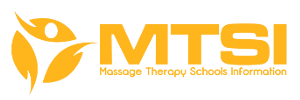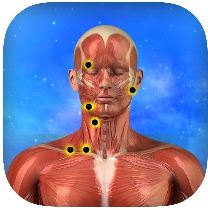
Emma Anderson LMT, I own Texas Sports Massage in Plano, TX. I have been in massage therapy for 23 years. I was a solo practitioner for years and really found a niche for sports massage therapy in 2007. In 2013 I opened a facility of 2000 sq. ft. and kept it simple.
Only massage therapy, no day spa therapies. I focused in Sports Massage and was fortunate to meet the indoor sports arena athletes of IFL, ISL, IHL. My clientele ranges from adolescents who are in dance, football, soccer, volleyball, cross country and on to therapeutic massage for auto immune disorders. Every client is different and with the years of on hands experience and listening to what the body says, I follow my company motto of “Discover the difference in one session!”
2. Tell us why you chose to go into massage and at what point in your life did you decide to do so? What were you doing at the time? Where did you first hear about the massage career? What factors influenced your decision? What were you looking to get out of this decision?
My first passion was as a jockey on the dirt track. I worked with a trainer and we always rubbed down the racehorses. It was important that the horse felt good so he could perform his best and connecting with the horses and building a bond was first and foremost. I learned hands on as my trainer was always caught in the stalls checking on the stride after a leg rub down on the horse. I chose to go into massage therapy for this reason.
In 1991 I found Maggie Kelley in Topeka, KS. She was a Texas Massage Therapy Instructor and offered a 30 hour hands-on certification course, as Kansas is not a license holding state. Maggie Kelley had traveled the world and was teaching eastern/western modalities in different courses.
I took the 30 hour hands-on training from Maggie Kelley and practiced 1,000 hours before “hanging a shingle.” In 1995 I relocated to Texas and attended Sterling Health Center in Addison, TX and became licensed in the state of Texas. I feel fortunate to have been blessed with great instructors who not only had the A&P but also the hands on knowledge of many years of practice to pass on.
I choose massage therapy as I enjoy helping people. It also gave me the flexibility to have my own schedule, be a stay at home mom, working part-time and building my clientele base through the years to open my practice, learning everything I could from working at day spas, chiropractic offices, events and learning the business side of massage therapy.
3. What were some of your questions and concerns before further pursuing your massage therapy goals? Talk about concerns with school and the profession itself.
My first and foremost concern was how I would be perceived as a massage therapist. The profession then was not as medical as it today. How many clients would schedule weekly? What type of therapist would I aspire to? Can I make a career out of this or would this be a couple years until the passion for the therapy would be gone? Could I do this therapy until I was 80? I found all of those answers when I went to massage school.
So many different varieties, niches, and possibilities presented themselves. My instructors were very passionate about the quality of the session, meeting the client’s needs, communicating and building a relationship with your client, and their own goal of helping other therapists aspire to the professional levels they didn’t think was possible. My instructors had the same fears for all of us as therapists as they struggled also to turn the profession in a more medical direction from the shady thoughts of what people thought it was of “for the rich” or just “a frou-frou treatment”.
I found my instructors to be very helpful, and their golden rule rings true in “When in doubt, refer out!” This helped me build professional relationships with MD’s , DO’s, CP’s, EMT’s, and PT’s. This helped tremendously to be a therapist who could rely on others to help my clients when they were in pain and massage therapy was not the answer.
Knowing your limits and not being afraid to send your clients to others continues to be a boon to this day. Those clients will remember you helping them. That will help build your referral base.
4. What is your specialty and what are the top three contributing factors to your success today?
My specialty is Sports Massage, Therapeutic Massage, Pre-event, and Post event massage. The top 3 contributing factors are:
Knowing my clients and building a relationship with them. What does that mean?
Sometimes you might have 30 minutes to make the difference. Communication with the client helps you analyze their needs during the session. This will help you know what their body is saying to them, what the right pressure is, the right therapy for that client at that time, and whether to use deep tissue or light therapeutic work.
As well, it helps decide what the right techniques and areas to focus on to relieve the tension. Always work smarter with the body, not harder against the body. And both during and after, checking in and asking about the session and stretching with the question of “How does that feel?” Communication is key! Help your client; this session isn’t about you. It’s about them.
Word of Mouth
Building professional relationships both in indoor arena sports and outdoor sports. Be your true authentic self and let people get to know who you are as a person. Help others! Don’t be afraid to give a discount. Enter into contracts and communicate well. If you can’t make an event call or email, let the team know SOMEHOW. Be professional and be reliable.
I had awesome instructors! They paved the way years ago for our profession with tried and true techniques, such as effleurage, petrissage, friction, and tapotement. They taught great routines that you can do in one session and have great results. The hands-on knowledge and techniques from years ago is being lost in translation.
Having a passion for what you do, find instructors that have made a difference to clients’ lives, and learn everything you can from them hands-on. It’s not in a book, it’s in the touch and the response of the therapy found in praises from your client. Most instructors want great students that want to learn, so get your hands oily!
5. What do you like about your specialty? What do you like about what you do in general as a career? Why?
I found my niche in Sports Therapy. It is great for the weekend warrior, to the professional NFL or Marathon runner. I have worked with young professional athletes of age 12 to athletes of 80 years. The therapy is based off of Swedish massage and both my clients and I like the results after the session has ended. It gives me a sense of achievement to see my client hobble in before the session and then leave in a stride and feeling much better.
I enjoy my career as a therapist and have for years. It takes commitment and passion to do this therapy every day. Each client is different and therapy can be adjusted to meet the needs of the presented complications. I meet people from all walks of life and it is a joy to have such great clients, whether it’s a one-time visit or a 5 year client.
6. What do you not like about what you do? Why?
I love what I do. I think the drawbacks to the industry are as follows.
I don’t like getting complaints of the last therapist- “They were too deep. I was sore for days, and I had bruises on my legs. I asked them to lighten up and they went deeper.”
“I’ve had massage before but it didn’t do much. My wife sent me in here so I am making her happy.” These responses that I get are very disheartening. I always try to fix the experience and make a difference in one session. When your session is ended and ask how they feel, you get the response of “That was the best massage ever.Thank you so much! I feel great.”
I often wonder what that last therapist was thinking, doing, or what drove them to doing that therapy and not listening to the client and having/finding compassion for that person. They know their body, why assault their sensory system with what you think is best for them?
It makes me question the golden rule of “Cause no harm.”
7. If there were three things you could change about your work or the industry as a whole what would they be? Why would you change them? What would you change them to?
See more therapists refer out. I do not like hearing that the last massage therapist adjusted my client at the end of the session. That is not in our licensure! Refer out to a good DO or DC!
I would like to see more therapists learn from hands-on internship in different massage therapy businesses. Hands-on learning for 500 hours with clients in the niche they want to get into. Whether that is cancer patients, day spa therapies, sports massage or medical facilities, I think internships make great massage therapists.
They not only learn the massage but they also learn the business. If they want to be a business owner of a facility and the work that is involved, it gives them a new perspective on business and what it takes in this competitive market. I would like to see more businesses offer internships for recently licensed massage therapists who want to make a career out of the licensure.
I would also like to see better monitoring of massage therapy in different offices. I am seeing chiropractors practicing massage therapy without going to massage school. Physical Therapists are also practicing massage therapy without going to massage school. I think the dual licensure in the state of Texas should be enforced more. There is enough for everyone but not everyone is going to massage school and learning properly. They are just practicing under the medical license.
8. How long do you plan to practice and what do you plan to do after?
That is a great question. It’s been 23 years. I plan on doing this until I am 80! I think my clients will change in the next 5 to 10 years. My niche will still be the same but I will be changing to the more therapeutic work. I think I see an MTI license in the near future for me and that will be my after plan. . .
9. Do you currently have another job or business whether full-time or part-time? Tell us a bit more about it and how you are able to juggle that with your massage career?
Though the years I worked several part-time jobs to build my therapy client base.
The most vivid that was not in massage therapy field was an Install Foreman for Garrett Gardens in Melissa, Texas. It was physically challenging installing new landscape packages in alkaline clay black soil.
When you are digging 4 to 5 foot holes for trees, throwing sod, and learning irrigation systems, you learn what muscles are sore and what to work on. It gives you an experience to recognize others who work so hard daily. I have to say I was in the best shape of my life and the sorest I have ever been each and every day!
10. What are some mistakes you made in your career pursuit that you’d like to warn other students about so they can learn from your experience and avoid it?
I think you should invest in yourself. For years I worked for other companies and learned everything I could from different industries. It took me awhile to find my niche. Find your niche and what you are passionate about. Do one thing and be passionate about it and the rest will fall into place as the clients that you attract will direct you from there.
GroupOn and Deal sites are great for a single massage therapist. If you have a business and 20 therapists, stay out of it. You are not going to make any money. You get overwhelmed with calls and can’t get everyone in on a Saturday. These clients you are marketing to are on a deal site. They aren’t looking for you, just a deal.
When you are working for someone else, be respectful. Be an asset to the company. Don’t be a negative ninny. If you don’t like the environment you work in find another place. If you are not happy it is transferred into your massage. You are not benefiting anyone.
11. What would you advice someone who is looking at massage therapy schools? What do you recommend they look for and how? How do you recommend they determine whether the school is the right one for them?
When I looked at Massage Schools it was a long time ago. I looked at the happiness of the clients who came out from student massage. I met with instructors. I asked what the pass rate was with the state testing. Everyone is different and so are instructors. My instructor was also a massage therapist who worked her clients around teaching. I like seeing instructors who still have clients daily. That is a great mentor, not just an instructor.
You can read anything you want out of the books but the hands-on and the experience is your money’s worth. Find instructors that you have something in common with. Do they have CEU’s that you are interested in for your niche or specialty? Can you continue and have support after you are licensed? Do they post job postings of other businesses in the area? Look at price, compare different facilities. At least pick three facilities before you decide which school it right for you.
12. What do you recommend for someone who wants to go to massage school but cannot afford it?
Save! Take on another part-time job for a bit. There is so much flexibility with schools now. They will work with you. Shop around as not all schools are priced the same. If you can save up for a year to two years ask what the cash price is without a loan. You might be surprised at the cost of savings of interest. Many massage schools will work with you and direct you to help for funding.
13. What are your three biggest points of advice for an aspiring massage therapist today? What should they do/not do? What should they think about and consider?
Be open to learning new things! Be grateful and be compassionate! Believe in yourself and don’t be jealous of the therapist who gets all the clients. Get a massage from them, feel the therapy and see what all of the rave is about. Be respectful of clients in pain and listen to them.
Find your niche! Find your niche! Find your niche! Develop it!
You can build a great clientele in six months whether you are working for someone else or for yourself. If you are struggling to keep clients you need to take a look at your therapy and change it up. If you are too light, you need to be in lymphatic or touch therapy/bodywork.
If you are too deep then you need to be in deep tissue release therapy. Everyone is different, so find the area that you excel in and work with those facilities that offer those services. There are clients out there for your touch; it’s finding your niche that will set you apart.
Build your clientele base outside of where you work. Do not take clients from where you work. It is bad ethics. Be respectful and do the right thing! Know yourself. Do you want the responsibility of working for yourself or just want to work for someone else? Working for someone else works well if you are new to the industry. You can develop your skills and find your niche in the process.
14. Any open thoughts / comments – anything else that you’d like to share about yourself, the massage industry, profession, future, etc? If nothing, make one prediction for the future of massage?
I really enjoy being a massage therapist. It’s my dance in life. I look forward to the endless possibilities and flexibility this career offers me. I learn something new every day.
I enjoy working with sports teams, coaches, trainers and athletes on a seasonal basis, which keeps me busy daily. I enjoy mentoring and coaching sessions with other therapists about their career and where it could take them.
There is a sea of massage therapists out there. Most only make it 1-5 years. Keep your license even if you are not practicing. You never know when an opportunity may arise that you might need to dust off the tools and reenter the field.
15. What is your passion outside of massage? What are your hobbies and interests which you pursue when you are not working? Tell us why you enjoy what you enjoy.
I enjoy gardening, landscaping, riding horses, and fishing. I enjoy these activities as it’s down time for my brain. It lets me reconnect with myself, be creative, have downtime. It also helps keep me in shape without going to a gym. You are working out but you don’t notice it while the flowers and trees bloom and you enjoy a good meal!
Emma Anderson is a Licensed Massage Therapist in Texas. You can read about her on her website here.








Leave a Reply